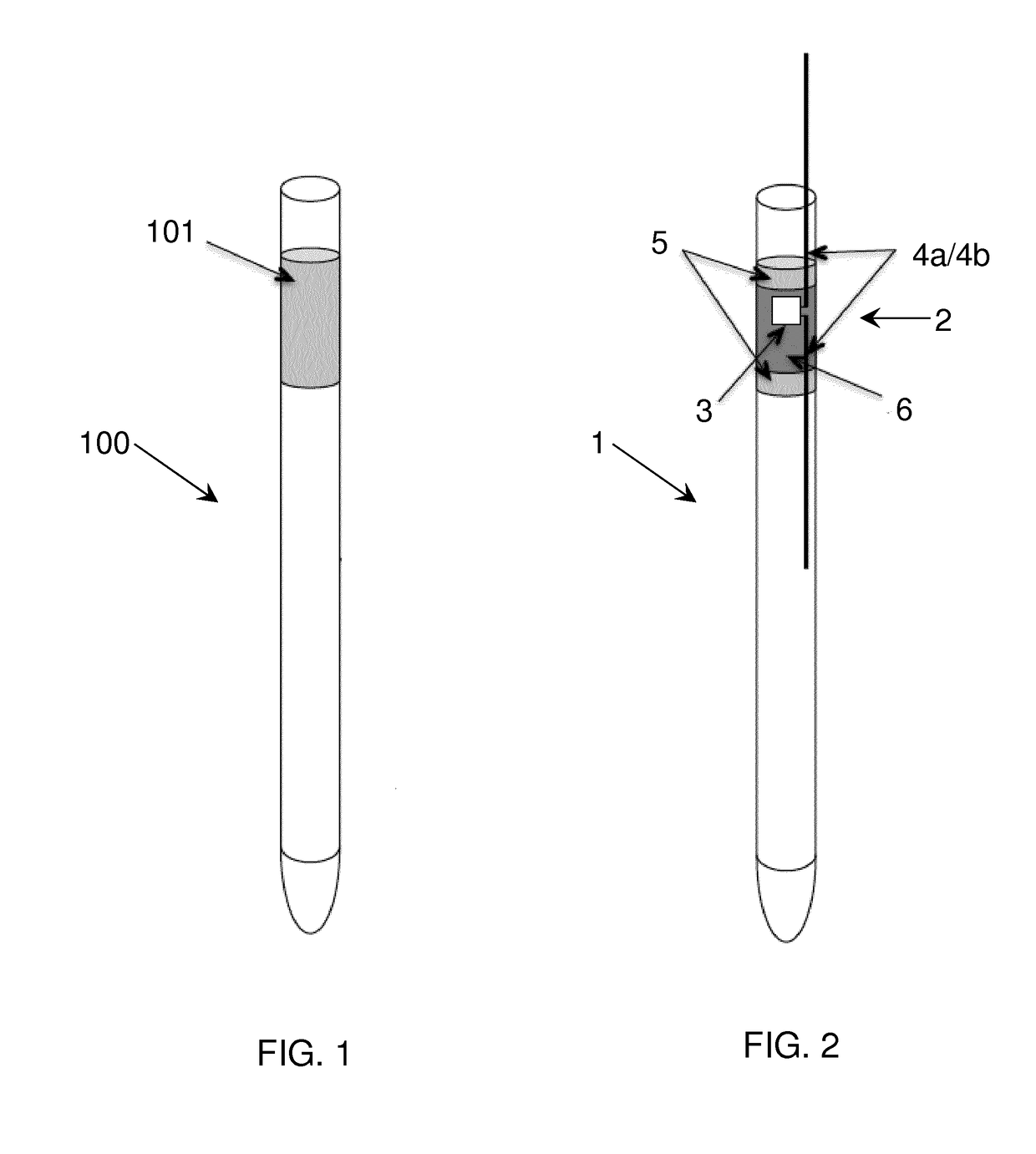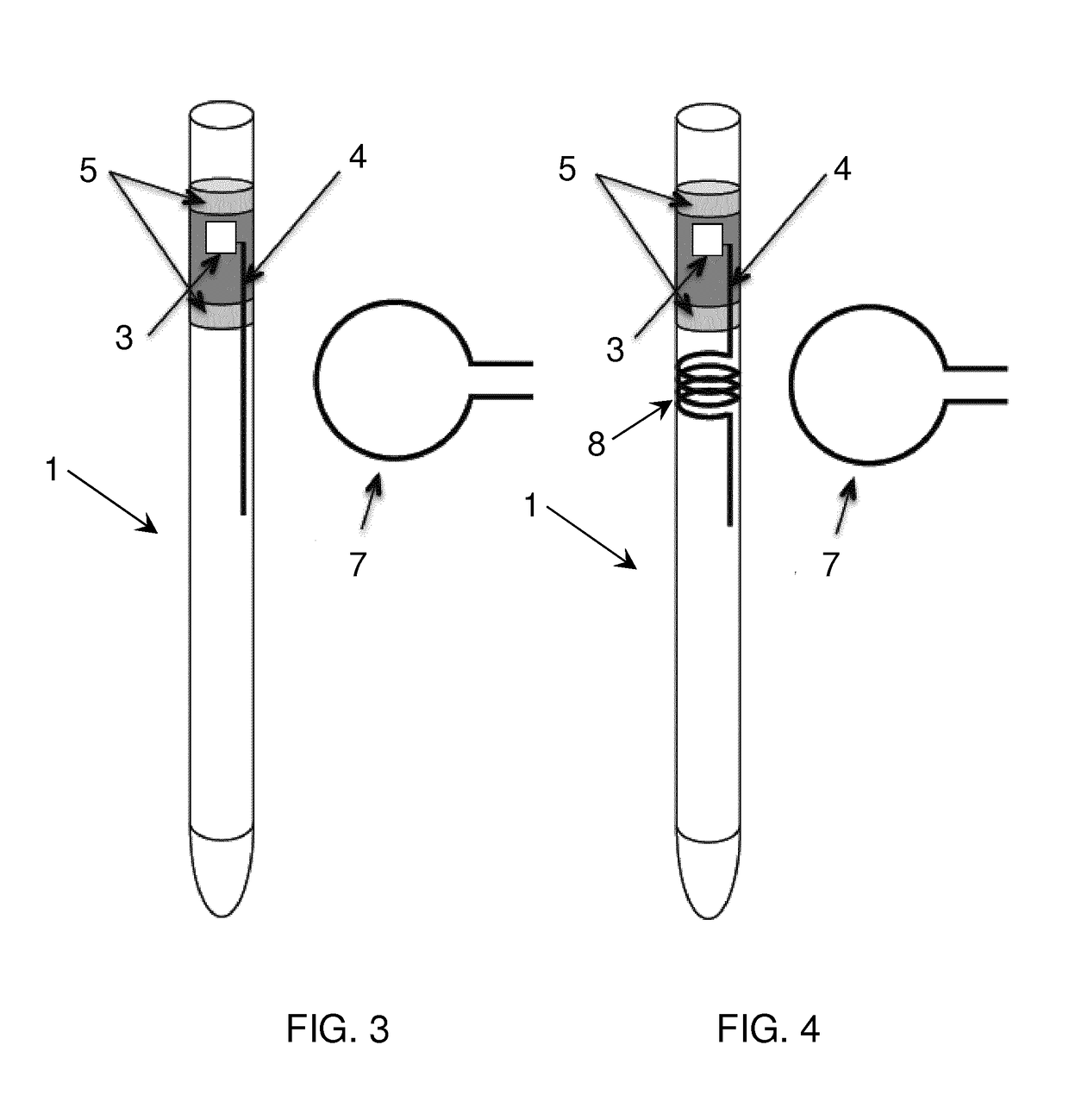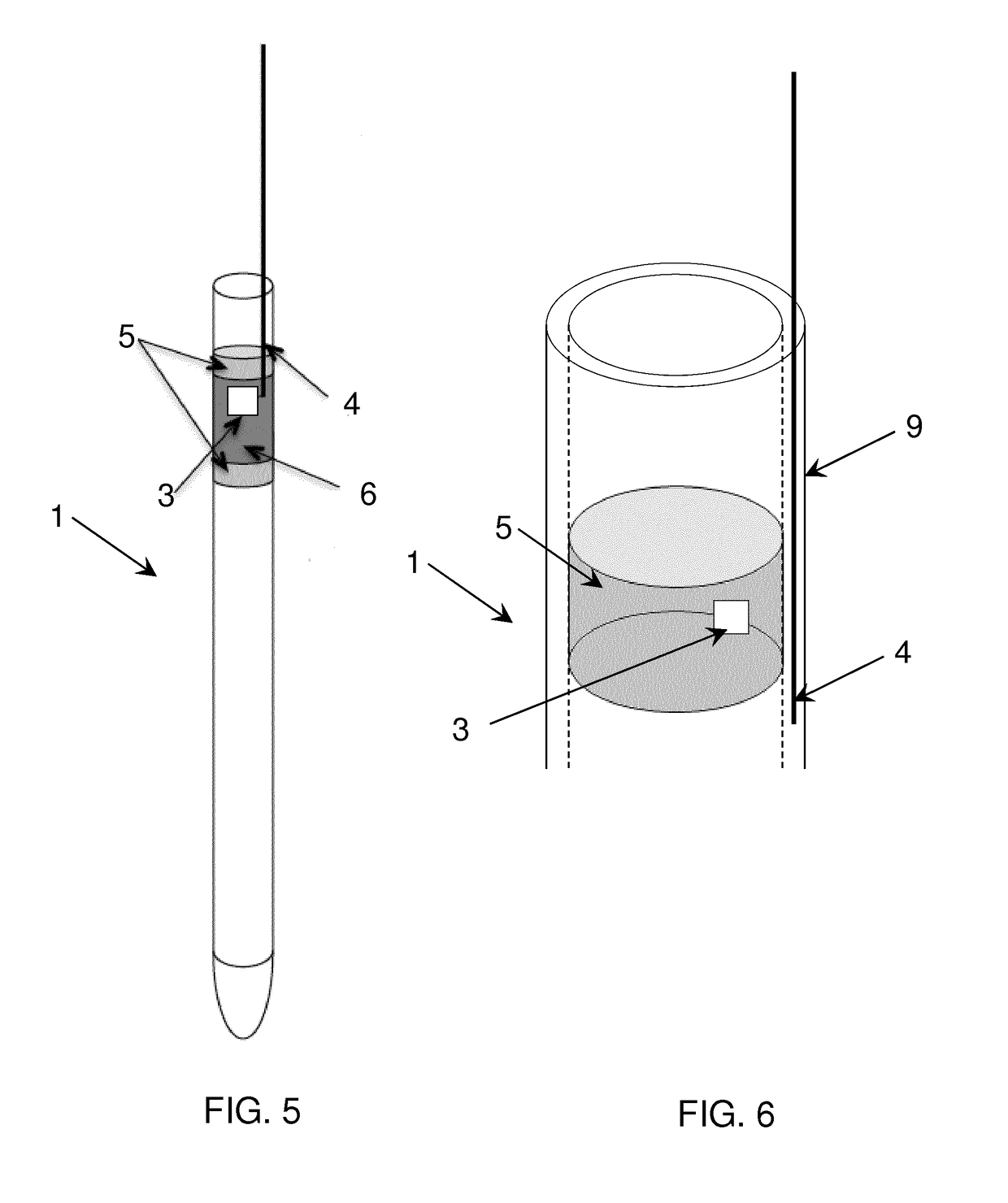RFID system for identification of cryogenic straws
a technology of rfid system and cryogenic straw, which is applied in the direction of protective material radiating elements, instruments, laboratory glassware, etc., can solve the problem of not working at room temperature, and achieve the effects of reducing the number of rfid systems
- Summary
- Abstract
- Description
- Claims
- Application Information
AI Technical Summary
Benefits of technology
Problems solved by technology
Method used
Image
Examples
Embodiment Construction
[0024]The present disclosure relates to a radio-frequency identification system for a cryogenic straw comprising:[0025]at least one integrated circuit configured to store information and generate a radio-frequency signal in a frequency range of between 30 MHz and 10 GHz or between 100 MHz and 3 GHz, or between 100 MHz and 1GHz;[0026]at least one antenna comprising a conductive thread, wherein the at least one antenna is configured to be integrated in the cryogenic straw or in a sealing element configured to be placed inside the cryogenic straw.
[0027]By operating in the ultra-high frequency range a very thin antenna can be used, which may be a thin conductive thread, preferably of metal, which may embedded in the straw, or, alternatively, in a sealing element that is placed inside the cryogenic straw. In one embodiment, the at least one integrated circuit and the at least one antenna is / are therefore configured to operate at 300 MHz to 3 GHz, which is also known as the decimetre band...
PUM
 Login to View More
Login to View More Abstract
Description
Claims
Application Information
 Login to View More
Login to View More - R&D
- Intellectual Property
- Life Sciences
- Materials
- Tech Scout
- Unparalleled Data Quality
- Higher Quality Content
- 60% Fewer Hallucinations
Browse by: Latest US Patents, China's latest patents, Technical Efficacy Thesaurus, Application Domain, Technology Topic, Popular Technical Reports.
© 2025 PatSnap. All rights reserved.Legal|Privacy policy|Modern Slavery Act Transparency Statement|Sitemap|About US| Contact US: help@patsnap.com



